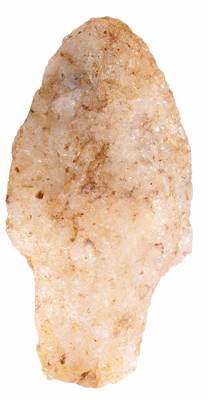

Point Type: NEVILLE
STEMMED
Also See: Adena Robbins, Bare Island , Duncan's Island, Genesee
, Heavy Duty , Merrimack, Morrow
Mountain, Muncy
Bifurcate, Newmanstown, Savannah River, Stanly , Stone Square Stemmed
Location: New England, including, Southern New York, Long Island, Northern New Jersey and Northeastern Pennsylvania
Associated Dates: 7000 - 6000 B.P. - Archaic
Morphology: Stemmed
General Description: The Neville is
a small dart point with straight to
slightly convex blade
edges and generally
with a sharp, well-executed tip. Shoulders are markedly defined and can
be square (90 degree) to obtuse. A few examples exhibit slight barbs. The stem is predominantly contracting with a truncated basal
edge, some specimens may have a straight to slightly expanding stem. The basal edge can be straight to slightly concave or convex, oblique or rarely lightly notched
.
The Neville is overall a well-made
sturdy point. Dincauze proposed it equates to a degree with the
Stanly point whos range of distribution is farther to the south and
west. The Neville was found with points having a Stark-like stem which are
approximately the same age.
The Neville type is mainly made with local
finely grained igneous rocks, quartz, argillite, quartzite and
chalcedonies. The size ranges from 19 mm to 64 mm in length with the
average being 38 mm.
The
Neville point type was named by Dena F. Dincauze
in 1976 for points she found at The Neville Site (once owned by John
Neville) at Amoskeg, Manchester, New Hampshire.
About the Point Above: The highly
reworked point pictured at the top of
this page, is a surface find from farmer Knapp's fields, near Frosh Pond, Stratford, Fairfield County, Connecticut. This point is made from
a white fine grained quartz that has some iron oxide staining. Overall
the point is 51 mm in length, is 26 mm wide at the shoulders,
and the stem is 19 mm long. The point has had its
tip reworked to the extent that is almost is a rounded scraper. Additionally the
edge of the base has a chip probably from
the plow. The point is quite thick and measures 13.9 mm at
mid blade. This thickness is probably due to the difficulties in knapping the
quartz material and perhaps that the blade was probably much larger in its original
size. Catalog Number
48-8-B
References: Dragoo (e), Fogelman, Hranicky (1), Justice (1), Overstreet, Perino (2)
© Copyright 1997 - 2009 LITHICS-Net WWW.LITHICSNET.COM
Use Your Browser's BACK Button to Return to the LITHICS-Net Index.